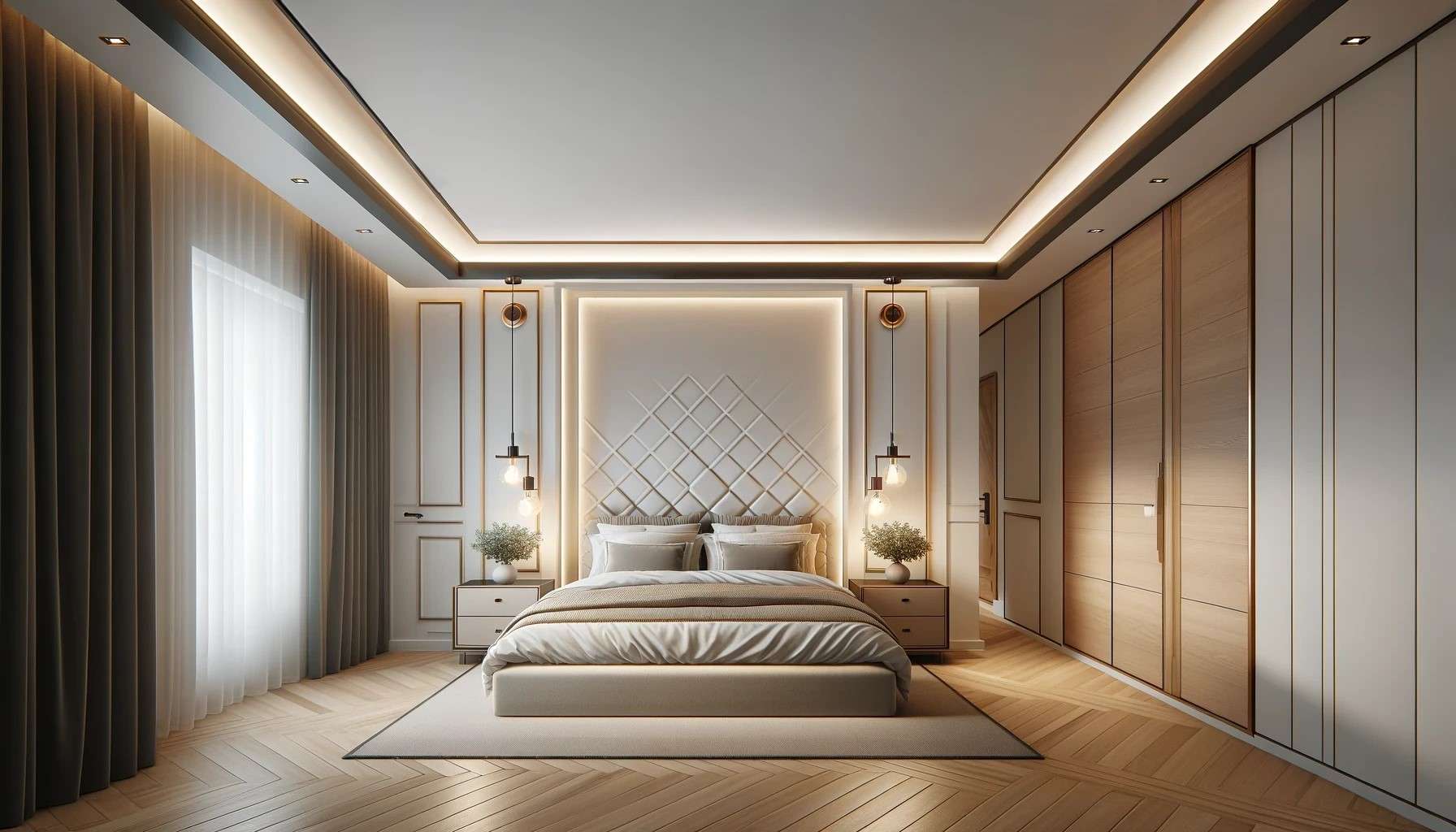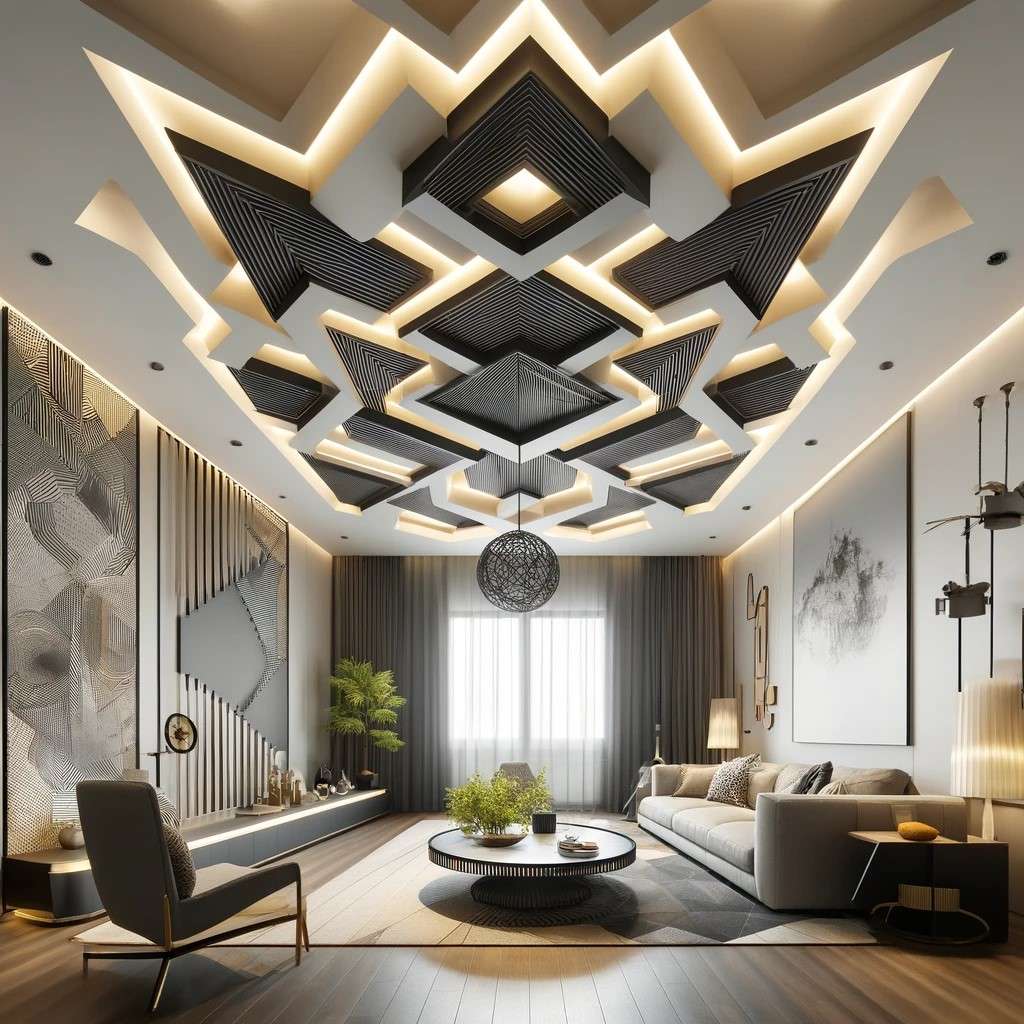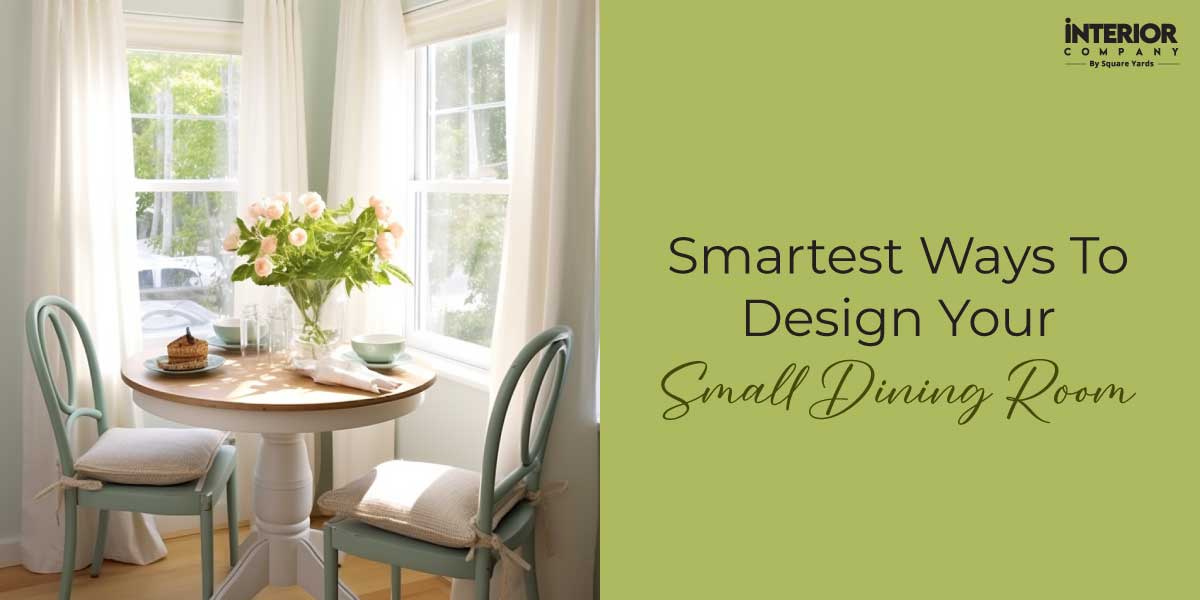- Kitchens
- Design Ideas
- Cities
- Trends
- Guides
- Price Calculators
- Our PortfolioNEW
- More
- Home
- Trends
- Furniture And Decor
- False Ceilings
- Modern False Ceiling Lrinc
Not Just a Cover-Up: Latest False Ceiling Designs, That will leave you, Wow!
Gone are the days of staring at a plain, vanilla ceiling. The fifth wall, as some call it, is now a prime canvas for expressing your unique style and enhancing the functionality of your space. From dramatic dips in the living room to ambient coves in the hall, the latest false ceiling designs for hall and ceiling decor design are pushing boundaries and redefining what’s possible overhead.
Table of Content
Meaning and Concept of False Ceiling
Types of False Ceiling Designs
- 2.1 Depths of Rustic with Wooden False Ceilings
- 2.2 Single-Layered False Ceiling
- 2.3 Multilayered False Ceiling Design
- 2.4 False Ceiling with Plus-Minus POP
- 2.5 Coffered False Ceiling Design
- 2.6 Peripheral False Ceiling Design
- 2.7 Geometric Fall Ceiling Design
- 2.8 False Ceiling with Wooden Slats
- 2.9 Inverted Cove Ceiling Design
Things to Consider When Investing in a False Ceiling Design
Maintenance of False Ceiling
To Conclude
The trend of false ceiling designs has grown in popularity in India, becoming a key element in modern home decor. This evolution in ceiling design provides homeowners with a vast selection of options. However, the sheer variety can sometimes be daunting. To avoid confusion, homeowners must identify their preferences before starting a ceiling design project. Before diving into the myriad of designs available, it’s important to understand what a false ceiling truly is.
Meaning and Concept of False Ceiling

A false ceiling is a ceiling that is fitted below the original ceiling. It creates the illusion of a lower ceiling, usually suspended by wooden or metal frames. Sometimes, parts of the original ceiling remain visible, hence the nickname ‘dropped ceiling’. This type of ceiling can be installed in any home, regardless of size, and is usually mounted at least 8 inches from the original ceiling. It is often hung using metal or wooden frameworks and can be constructed from various materials, including gypsum board, plaster of Paris (POP), wood, metal, or synthetic fibres. You have a plethora of choices at your disposal, especially when considering false ceiling designs for the hall or false ceiling designs for the living room.
Types of False Ceiling Designs
Look at these timeless and popular styles that can enhance your home, guiding you to select the ideal suspended ceiling that fits your requirements. Let’s explore some of the hottest trends in false ceiling design:
Depths of Rustic with Wooden False Ceilings

For those who adore a rustic aesthetic, a wooden false ceiling can enhance the beauty of your space. This stunning living room blends POP and wood, creating an elegant false ceiling decor design with rustic charm. There are various false ceiling materials, each suited for different needs.
Single-Layered False Ceiling

Want to enhance your space with a chic touch without going over the top? Consider a single-layered ceiling! It adds depth to your room while keeping an understated elegance that won’t overwhelm your decor. Despite its simplicity, you can still add plenty of personality by experimenting with colours, shapes, textures, and lighting. For instance, you might explore false ceiling designs for the hall to add a unique and modern flair to your living space.
Multilayered False Ceiling Design

For an outstanding false ceiling design in your hall, consider incorporating layers. This approach provides a fantastic opportunity to experiment with various colours, lighting, and textures, enabling you to create a uniquely personalised ceiling. Layering not only adds depth and character but also helps to give the impression of a more spacious room.
False Ceiling with Plus-Minus POP

The plus-minus POP design showcases a modern aesthetic with protruding elements, deviating from traditional styles. This design aims to make a bold statement with its striking, intricate features. Before implementing this design, consider your decor and space ' it excels in settings that allow unlimited creativity.
Coffered False Ceiling Design

Coffered ceilings add undeniable depth, texture, and visual interest to a room. This ceiling decor design can elevate your space’s overall look and feel, making it appear more grand and sophisticated. Coffers are recessed square or rectangular panels installed in a ceiling. This design adds dramatic flair to a space and gives the impression of increased ceiling height and depth.
Peripheral False Ceiling Design

A peripheral false ceiling design is a type of ceiling treatment where the false ceiling is installed along the room’s perimeter, leaving the central portion of the ceiling untouched or at its original height. This design creates a recessed effect around the room’s edges, which can be aesthetically pleasing and functionally beneficial.
Geometric Fall Ceiling Design

Geometric fall ceilings are a bold and innovative design trend that takes the concept of false ceilings to a whole new level. This isn’t your average flat drop ceiling – it’s a dynamic play on shapes and levels, creating a visually striking element that adds drama and dimension to your space. Optimise space in homes with low ceilings using this minimalist design that seamlessly fits into the room’s corners. It provides an ideal backdrop for a striking chandelier or pendant lights.
False Ceiling with Wooden Slats

By integrating wooden slats into your hall's false ceiling design, you can impart a refined Indian essence to your space. This ceiling design not only provides insulation but also radiates a classic charm.
Inverted Cove Ceiling Design

An inverted cove ceiling decor design is an eye-catching architectural feature that adds visual interest to a space and offers several functional benefits. This adaptable design achieves harmony in any space. It is perfect for lowering high ceilings and creating a cosy atmosphere with ambient lighting. The recessed cove creates an illusion of a higher ceiling, making the room feel more spacious and airy. This is particularly beneficial in rooms with lower ceilings.
Things to Consider When Investing in a False Ceiling Design
Space and Ceiling Height: False ceilings can visually lower the actual ceiling height. Ensure your room is large enough to accommodate the design without feeling cramped. While some designs can create the illusion of more space, consider if you have enough clearance for a comfortable feel.
Functionality and Needs: What do you hope to achieve with the false ceiling? Concealing wires, improving acoustics, or adding lighting are all factors to consider. Will you need access to the space above the ceiling for maintenance or future renovations? Consider easy-to-remove panels or access hatches.
Design and Aesthetics: Match the false ceiling design to your overall décor. Minimalist for a modern space, coffered for a classic look, or bold with geometric shapes! Explore recessed lighting, cove lighting with LED strips, or even pendant lights for added drama.
Maintenance of False Ceiling
Maintaining a false ceiling involves a few regular practices to ensure it remains in good condition and lasts longer. Here are some tips for maintaining your false ceiling:
- Use a soft cloth, duster, or vacuum cleaner with a brush attachment to remove dust and cobwebs. Dusting should be done at least once a month to keep the ceiling clean.
- Use a damp cloth with a mild detergent solution to gently wipe away any spots or stains for gypsum or POP ceilings. Avoid using excessive water to prevent damage.
- Use a wood cleaner or polish to remove stains and maintain the wood's shine for wooden ceilings. Follow the manufacturer's recommendations for specific cleaning products.
- Inspect the ceiling regularly for any signs of moisture or water damage, especially in areas prone to leaks like bathrooms and kitchens. Address any leaks immediately to prevent mould and mildew growth.
- Over time, false ceilings may need a fresh coat of paint to maintain their appearance. Use high-quality, mildew-resistant paint suitable for the ceiling material.
To Conclude
When it comes to interior design, it is easy to focus on a room’s walls, furniture, and accessories. However, one element that is often overlooked is the ceiling. The ceiling is often referred to as the “fifth wall” in interior design, and for good reason. It significantly impacts the overall look and feel of a room. The possibilities are as endless as your imagination.
Gone are the days of settling for popcorn ceilings and uninspired finishes. Today’s false ceilings offer a symphony of light, shape, and texture, seamlessly integrating aesthetics with practical benefits like improved acoustics and temperature control. So, if you are ready to take your home interiors to the next level, why not book an online consultation with Interior Company today? We will advise you on the best false ceiling design ideas for your home and budget. Don’t wait any longer; transform your living space into a stunning masterpiece today!
*Images used are for representational purposes only. Unless explicitly mentioned, Interior Company does not hold any copyright to the images.*
False Ceiling Design Ideas for You
- Theme
- Type
- Material
- Shape
- Striped Type False Ceiling
- Single Layered Type False Ceiling
- Stucco Type False Ceiling
- Plus Minus Type False Ceiling
- Peripheral Type False Ceiling
- Parallel Type False Ceiling
- Painted Type False Ceiling
- Multi Level Type False Ceiling
- Multi Layered Type False Ceiling
- Double Layered Type False Ceiling
- Coffered Type False Ceiling
- Central Drop Type False Ceiling
Ready for a home transformation?
Let our designers assist you!
Recent Posts
The latest trends include minimalist designs with recessed lighting, geometric patterns, wooden accents, metallic finishes, and integrated lighting features like LED strips and cove lighting.
Consider the room’s size, ceiling height, existing décor, and the type of lighting you want. For a modern look, opt for clean lines and hidden lighting. For a more traditional feel, consider decorative mouldings and textured finishes.
Common materials include gypsum, Plaster of Paris (POP), wood, metal, and PVC. Each material offers different benefits, such as moisture resistance, fire resistance, and ease of installation.
The cost varies depending on the material used, design complexity, room size, and labour charges. Getting multiple quotes from contractors to balance quality and budget is best.
Related Category
- Balcony
- Bedroom
- Dining Room
- Kitchen
- Living Room



































